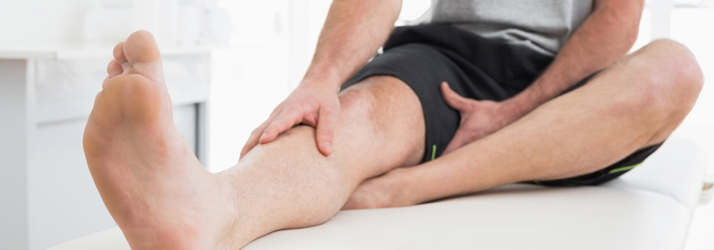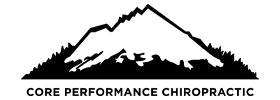Waterpolo Kick
Waterpolo Kick

Water polo is an extremely technical and physical sport. From treading water to throwing a ball with no ground interaction to generate power, water polo truly is an exciting game. With all of the intense components of the game, one of the most technical and important is that of the eggbeater kick. The eggbeater kick is used not only to allow a player to maintain a given position but it is also utilized to propel players up to block and throw.
In order to have a better understanding of what we should train to improve the efficiency of our eggbeater kick, we must first break down and understand the dynamics of the various components of this specific kick. The first big idea to understand is that skill in the eggbeater is associated with the range of motion and speed of the hip, leg, and foot. As we look at less skilled players, we often notice that these athletes tend to exhibit smaller ranges of motion of the hips and knees, less range in lateral rotation (rotated outward), as well as slower foot speed throughout the power stroke. As a player increases the range of motion of the hip and knee, their foot speed increases as well. When we look at the starting position of the kick and the motion through the power phase, we can begin to understand the exact motions that need to be trained. Optimally at the start, the hips begin in roughly 80 degrees of flexion , 90 degrees of abduction (moved away from midline), and 30 degrees of lateral rotation. At the same time, we see that the knees begin laterally rotated and flexed to approximately 15 degrees. During the kick, power is produced within the stroke when the hips and knees are extended (straightened), adducted (brought towards midline), and medially rotated (rotated inward). As we begin to correlate range of motion and speed to equate to power, we can see that as we improve our range of motion, as well as increase the speed at which we accomplish that motion, we can effectively generate more power.
The second key component of a skilled eggbeater kick is that of the angle of the foot and lower leg. The foot is an extremely important piece of the eggbeater kick as the foot acts as a foil (similar to the wing of an airplane) throughout the stroke to create lift. Without the proper angle, we lose the foots ability to act as a foil, ultimately resulting in a less efficient stroke, as well as losing the ability to effectively maintain upright posture in the water. Once again, we will break down the motion that is occurring. At the begin of the stoke, the foot must be dorsiflexed (pulled toward the shin) and everted (sole of the foot turned outward). This position provides a large surface area for the foot and water to interact. As we continue through the stroke, the foot is plantarflexed (moved away from the shin) and eversion is maintained improving the wing-like nature of the foot to produce lift. With this, we see that the amount of lift that is produced with the eggbeater kick is reliant on three things; the angle of the foot, the speed of the foot, and the range of motion of the foot. Although the foot must transition into plantarflexion through the stroke, an excessive amount of plantarflexion will decrease the effectiveness of the foot to act like a wing.
The third and final part of the eggbeater kick that we are going to break down is the process of rising further out of the water. The key to driving the body out of the water to a higher point is not just increasing the speed of the kick, but to also rapidly extend the trunk (part of our body minus the head and limbs) with the knees in succession. As we break down the effects of this, this rapid extension through the knees will provide the athlete with higher maintained foot speed, as well as greater force being applied to the water.
Now what does all of this mean for our offseason training? While a key aspect to any sport in the offseason is strength training, we must also put a heavy focus on increasing the range of motion in our hips, knees, and feet. We need to work to find what our body disfunctions (limitations) are and slowly work to become more functional. How do we do this? Just as we overload muscle tissue in a consistent process to increase strength, we can also overload our joint tissue through its end range to functionally increase its full range of motion. To do this, we utilize exercises that combine stretching and isometrically contracting (generating tension without changing length) tissue throughout various joint angles. But why must we add in these isometric contractions? Our central nervous system dictates what we perceive as a “safe” range of motion. In order to override this process, we must utilize specific muscle contractions that allow our body to understand that going to certain positions is safe and acceptable. This is where the isometric contractions come into play, we perform these isometric contractions in both shortened and lengthened positions, with emphasis on the end range of our motion, we are able to effectively “trick” our nervous system into understanding that it is in a safe and controllable position. Now it should be noted that in order to have the effect that we are seeking, we must perform these isometric contractions at >80% of our individual maximal contractile ability. What this means, is that we need to work to contract as hard as we possibly can.
Every individual will have different issues and needs. For the best results, seek guidance from a trained professional. Dr. Alex Lee at Core Performance Chiropractic in Fremont understands the body and what the body needs to accomplish to become the best version of your own water polo player. He specializes in extremity work and understands the biophysics of the body.
Monday
8:30am - 1:00pm
3:00pm - 6:00pm
Tuesday
7:00am - 1:00pm
3:00pm - 6:00pm
Wednesday
3:00pm - 6:00pm
Thursday
7:00am - 1:00pm
3:00pm - 6:00pm
Friday
8:30am - 1:00pm
3:00pm - 6:00pm
Saturday
Appointment Only
Core Performance Chiropractic
39210 State St Suite 204
Fremont, CA 94538
(510) 737-2306


